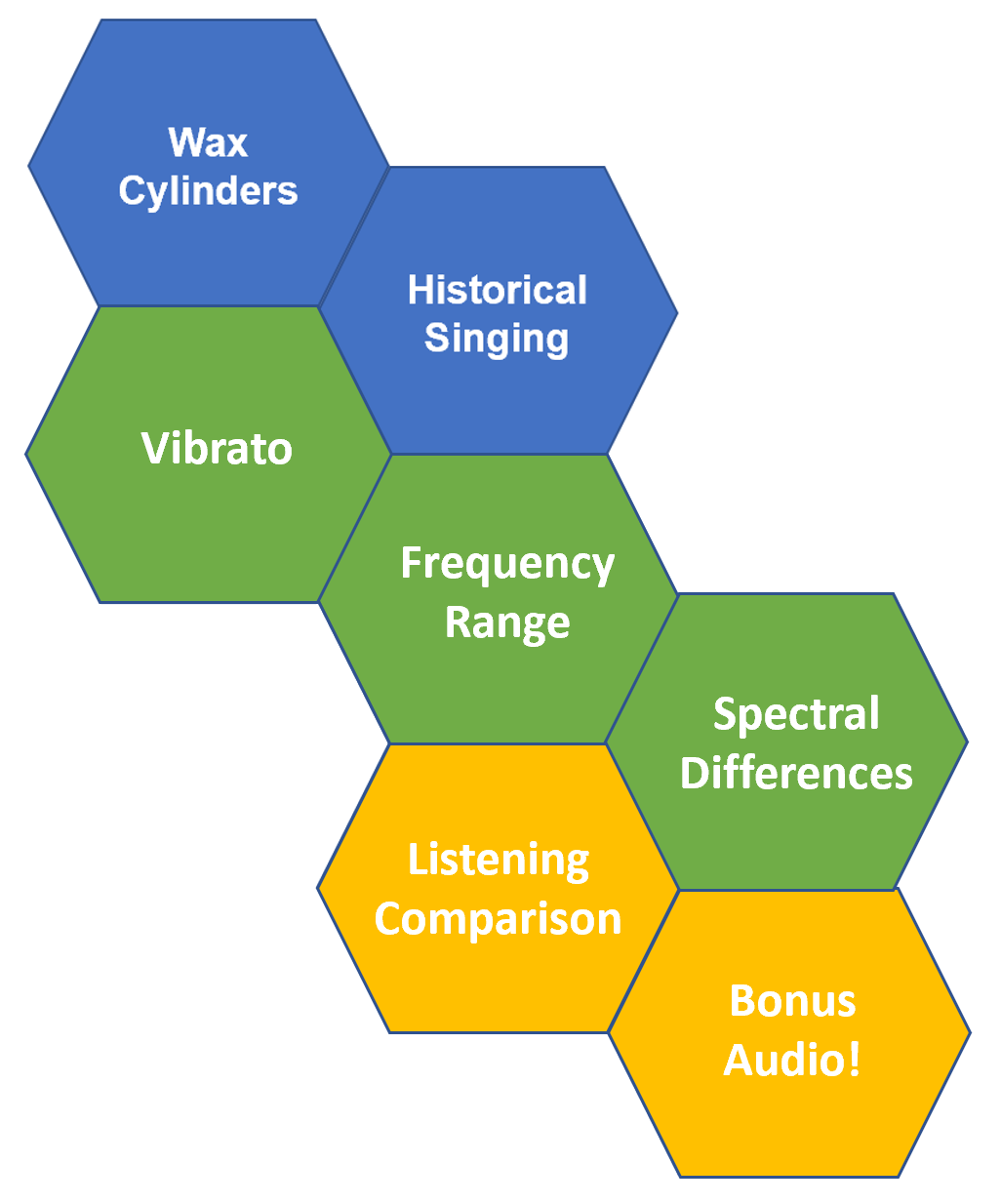Listening to the Past: Understanding the Effects of Historical Recording Technology
Joshua D. Glasner, M.M., Ph.D.
Aaron M. Johnson, M.M., Ph.D.
Click a hexagon to learn more about wax cylinder recordings of voices.

What is a wax cylinder?

Wax cylinder phonographs were the first mass-produced form of audio recording technology. The recording system was acoustic and sound was captured by singing or playing into a horn (seen above) and etching into a malleable composite material with a stylus (a metallic needle). Early cylinders were recorded individually, either by the musician(s) performing a song repetitively or by using multiple phonograph recorders simultaneously.
How did singers sound around 1900?
Pretty bad.
Did vibrato change based on the recording technology?
How was the frequency range limited?

Results from this study indicated that the wax cylinder phonograph system was capable of recording frequencies between approximately 160 Hz - 9 kHz, but frequencies below ~523 Hz were significantly dampened (attenuated). This spectrogram image highlights the apparent loss of frequency information below 523 Hz except for around ~218 Hz (which is a measured resonance of the horn). After simulating wear (10 plays on period equipment), the noise floor significantly rose to include frequencies above 3 kHz.
How were the technologies spectrally distinct?

This image is a long-term average spectrum (LTAS) of 9 seconds of white noise (20 Hz to 20 kHz). White noise over a long duration of time contains all frequencies in a range at equal sound intensity. We see here the top boundary (black), which was white noise recorded by a flat-response microphone, and the gray shading, which was the same signal recorded by a wax cylinder phonograph at the exact same time.
Notice the steep decline in sound intensity level below 440 Hz and above 2,000 Hz.
Listen to pros on cylinders!
Hear an excerpt from an aria!
Acknowledgements: A heartfelt thank you to Gerald Fabris and the Thomas Edison National Historical Park (West Orange, NJ) for donating their time and expertise toward this project.
